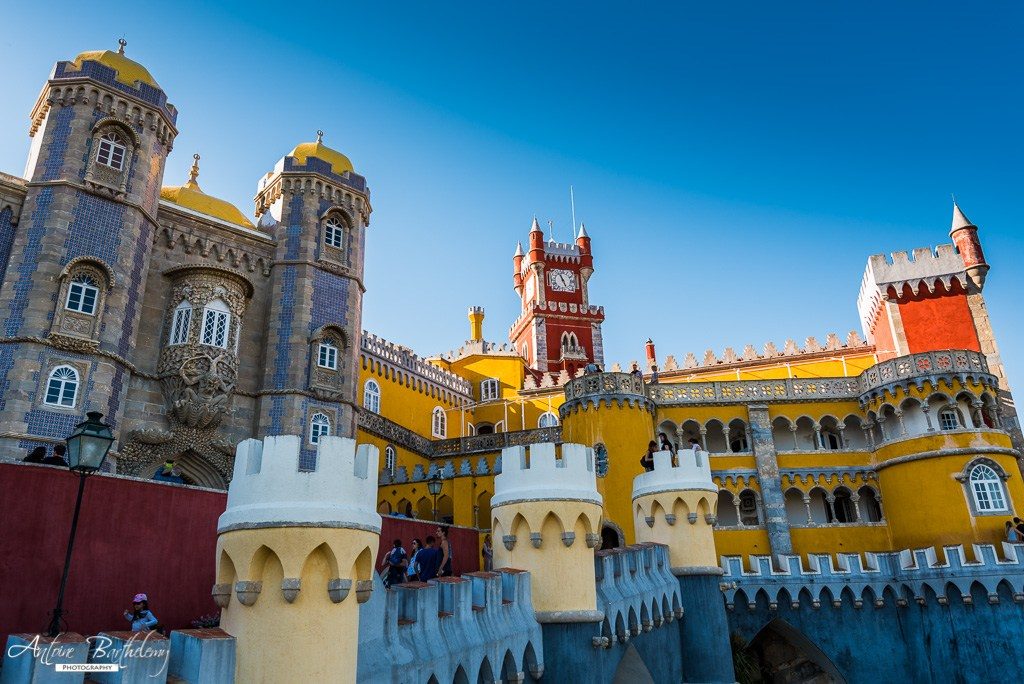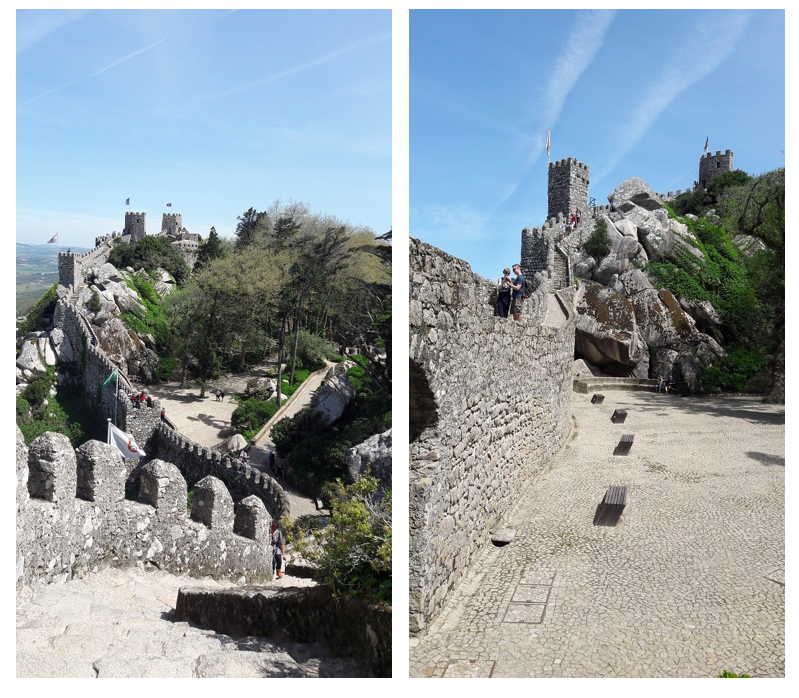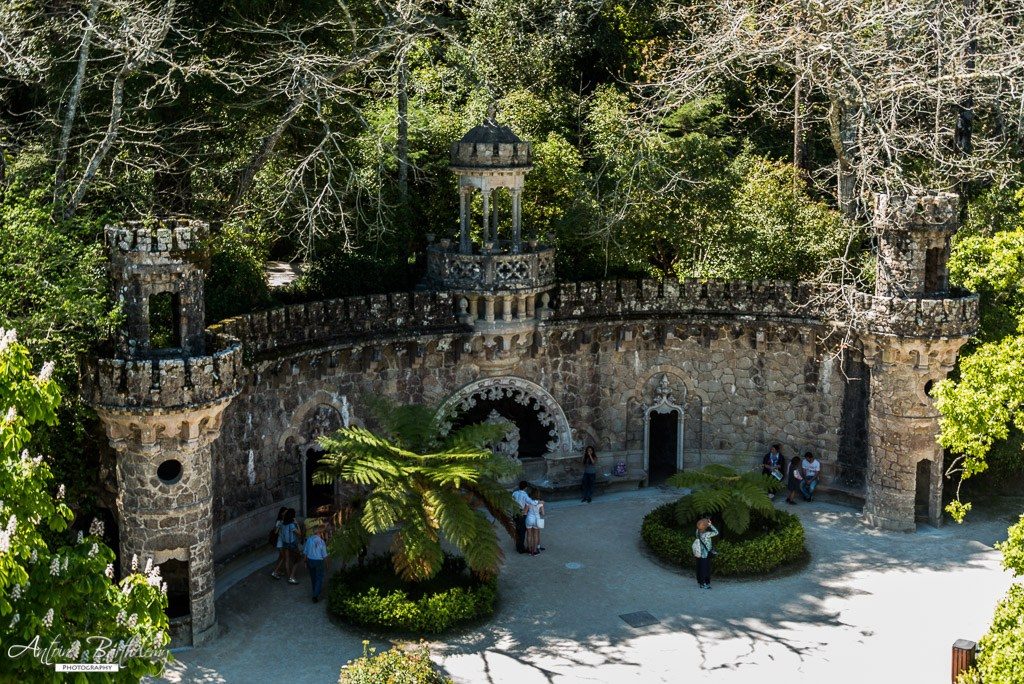By Antoine Barthelemy

Sintra is situated in the mountains near Lisbon and has contributed hugely to the Portuguese heritage in buildings and monuments over the course of history. In 1995, UNESCO recognised the importance of the architectural heritage and classified the city as a World Heritage Site.
Most famous for its many astonishing 19th century romantic palaces, it has become a favourite destination for tourists visiting the Lisbon region or coming to Portugal in general.
Palácio da Pena
One of the finest examples of 19th century Portuguese Romanticism, one of the seven wonders of Portugal and the number one destination in Sintra is Pena Palace.
Standing atop of the Sintra Mountains, the construction started in medieval time with the building of a chapel dedicated to “Our Lady Pena” and for centuries, between 1495 and 1755, Pena was used as a monastery housing only monks.
The devastating earthquake of 1755 brought the monastery into ruins. It remained untouched for nearly a decade until 1838, where Don Fernando II, the husband of Queen Maria II purchased the ruins of the monastery plus the 85 hectares park, in order to build a palace as a summer residence for the Royal family. The construction lasted between 1842 and 1854.
Don Fernando II died in 1895, and after a few years in the hands of heirs, the Portuguese State acquired the park and the palace.
Following the Republican revolution in 1910, the Pena Palace was classified as a National monument and transformed into a museum. It quickly became one of the most visited monuments in Portugal and remains so today.
Palácio Nacional de Sintra
The first reference to the palace dates back to the 10th century, when the Moors ruled the Iberian Peninsula. The castle fell into Portuguese hands in 1147 after the conquest of Lisbon by Alfonso Henriques, who decided to use the castle for himself.
The building, as it stands today, dates back to the 15th and 16th century, both thanks to King John I, who ordered most of the construction work of the palace we recognise today, and King Manuel I, under whom the Gothic-Renaissance art style developed, named Manueline.
The palace suffered during the Lisbon earthquake of 1755, which resulted in many restorations works. It has been used as a Royal residence from the reign of King John I until late 19th century.
In 1910, it became a national monument for Portugal.
Castelo dos Mouros
The Castle of the Moors is a hilltop medieval castle built during the Moorish occupation in the 8th and 9th century. It became an important strategic stronghold during the Reconquista (711-1492) after the forces of King Alfonso Henriques took control of the castle in 1147. By 1383, its military importance has diminished and was ultimately abandoned in 1493.
Just like the Palácio Nacional de Sintra, the Lisbon earthquake of 1755 damaged the monument considerably, which prompted reconstruction work and ensured, that the buildings stand tall and proud again today.
The medieval, Moorish castle is also classified as a national monument.
Palácio de Monserrate
One of the most beautiful architectural examples of Romanticism in Portugal is Palácio de Monserrate, an exotic palace that combines Neo-Gothic elements, Moorish Revival architecture and even Indian influences amidst a 33-hectare garden.
It all began in 1540, when a chapel was constructed, dedicated to Our Lady of Monserrate. After the earthquake of 1755, Gerard De Visme constructed a palace on the ruins of the chapel.
The actual palace however, was envisioned by Sir Francis Cook, an Englishman who acquired the property in 1858 and renovated the palace and garden in the eclectic style we see today.
The palace became the property of Portugal in 1949, and underwent major restoration work in 2010. Today, the palace is one of the finest examples of Sintra Romanticism.
Quinta da Regaleira
One of the most enigmatic monuments in Sintra is Quinta Da Regaleira or “The Palace of Monteiro the Millionaire”, nicknamed after the former owner. The Portuguese millionaire entomologist Carvalho Monteiro (he inherited a fortune) began construction together with the Italian architect Luigi Manini in 1904, and together they created an extraordinary architectural landscape filled with alchemistic and mystical symbols.
After his death, the estate changed hands a couple of times, but in 1997, the premises were acquired by the Sintra town council and opened to the public in 1998.
The sheer size and number of exceptional palaces in Sintra is so overwhelming, that it would be a shame to visit them all in one day. We recommend spending 2 days to stroll the landscape and take in the many impressions.






















